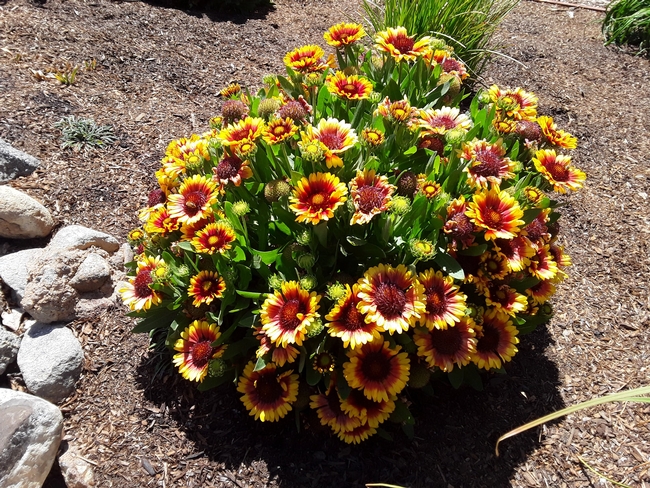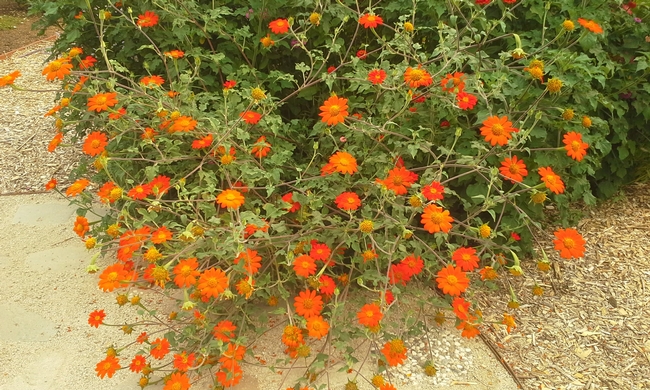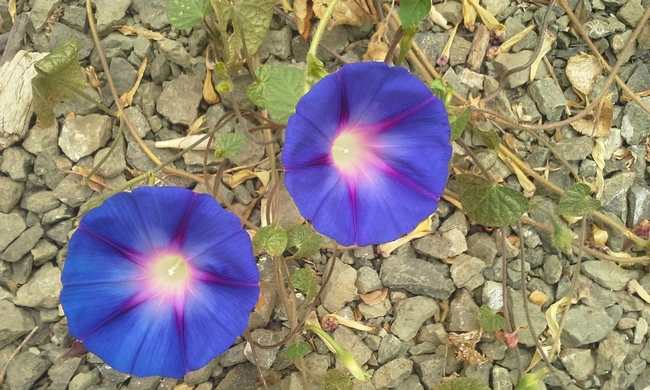by Melody Kendall



• Begin by examining your garden to see what worked, didn't work, what could be done differently or better.
In my garden: staking my chrysanthemums and giving my lantana a chance to recover
• Consider plant revisions (species and location changes, size considerations, color, texture, pollinator activity, and adding accessories like rocks and logs).
In my garden: get rid of the morning glories and wait to see what recovers from spring frosts
• Select plants for fall installation while the soil is warm and to take advantage of winter rains. Plant spring blooming bulbs. Warm soil allows microorganisms to thrive so your new fall plants will establish their roots before the cold sets in.
In my garden: get my spring bulbs settled into the garden beds
• Leave the leaves! They are free mulch and provide winter shelter for creatures and insects. Plus, the leaves protect the soil from erosion and run off. Exceptions to this would be in fire prone areas where leaf and debris removal is a must.
In my garden: I'm going to leave the leaves
• Eliminate as many weeds as possible.
In my garden: An ongoing effort in any garden at any time.
• Aerate the soil with a garden fork, but don't till — it damages root systems. Aeration will allow water and air penetration, essentials for healthy soil and plants. Avoid soil compaction by limiting where you walk.
In my garden: Gently poke holes in the soil with a wide tined garden fork while watching out for the irrigation lines
• Nutrients in the soil are depleted in the spring through summer months. Help the soil replenish nutrients by adding compost and slow-release organic amendments.
In my garden: Application of compost and manure mixture
• Remove diseased plants by cutting them off at soil level. Remove any diseased leaves under the plants, such as those with black spot, fungus, and more that will infect new and existing plants in spring.
In my garden: Cut the stalks of the dahlias to the ground and assess the needs of the perennials and shrubs
• Leave deadheads on plants that have seeds for birds to eat.
In my garden: Leaving the Mexican sunflowers (Tithonia) until late winter
• Cut off broken or dead tree branches for safety, tree health, and appearance.
In my garden: Shape the trees
• Remember, to maintain a vibrant habitat space, avoid the use of pesticides and herbicides.
In my garden I don't use any pesticides or herbicides. I feel like I'm contributing to the environment by avoiding their use and besides having a dog. That is not to say that pesticides and herbicides don't have their place, just not in my garden
Put in the effort now and your spring garden planning will be more satisfying. It sounds like a lot of sweat and energy, but plug into your latest audio book while you enjoy the fresh air and accomplish these preparations in anticipation for the next growing season.
Napa Master Gardeners are available to answer garden questions by email: mastergardeners@countyofnapa.org. or phone at 707-253-4143. Volunteers will get back to you after they research answers to your questions.
Visit our website: napamg.ucanr.edu to find answers to all of your horticultural questions.
Photo credits: Mel Kendall
Information links: UC IPM
Weeds http://ipm.ucanr.edu/PMG/weeds_intro.html
Powdery mildew http://ipm.ucanr.edu/QT/powderymildewcard.html
Chrysanthemum http://ipm.ucanr.edu/PMG/GARDEN/FLOWERS/chrysanthemum.html
Zinnia http://ipm.ucanr.edu/PMG/GARDEN/FLOWERS/zinnia.html
Lantana http://ipm.ucanr.edu/PMG/GARDEN/PLANTS/lantana.html
UCMG Sonoma County
Smoke Tree https://sonomamg.ucanr.edu/Plant_of_the_Month/Cotinus/
UCMG Tulare/King Counties-Gaillardia https://ucanr.edu/datastoreFiles/268-497.pdf